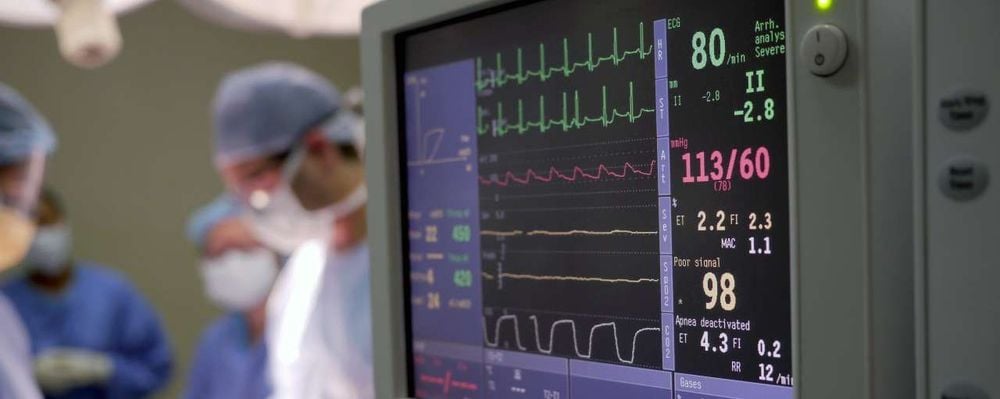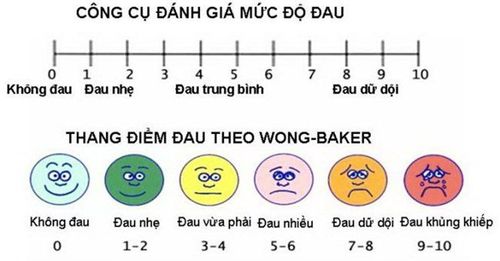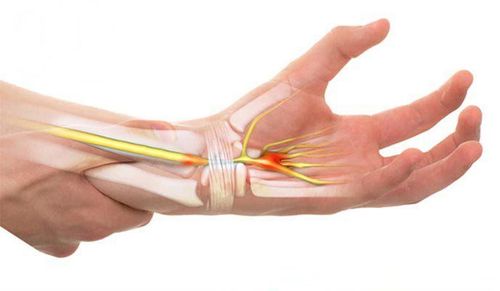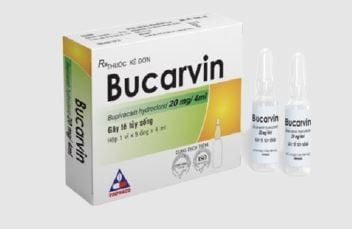This is an automatically translated article.
The article was written by Specialist Doctor II Nguyen Thi Hoai Nam - Head of Pain Relief Unit, Department of Surgical Anesthesia - Vinmec Central Park International General Hospital.Surgery is a stressful time both psychologically and physically for the patient. In addition to worries and insecurities about their own disease and results of surgery, the patient's first concern is pain and pain relief after surgery. To help patients accept and ease through this challenge, it is important to provide them with everything they need to know about pain and postoperative pain relief.
1. Classification of pain
Pain is by definition an unpleasant sensory and emotional experience associated with actual or potential tissue damage, or a description of such damage.
Pain classification: Pain classification is useful in assessment and treatment. There are many ways to classify pain.
Classification according to physiology:
Nociceptive: Pain due to nociceptive, expressing the body's normal response to trauma or injury to tissues such as skin, muscles, internal organs, joints, tendons, bones. Neuropathy: Pain related to primary injury or pathology of the nervous system Inflammatory: Pain due to inflammation eg appendicitis, arthritis... By intensity: usually a pain scale of 0-10 where 0 - no pain, 10 - unbearable pain:
Mild pain: 0-4 points Moderate pain: 5-6 points Severe pain: 7-10 points

Có nhiều nguyên nhân khác nhau gây ra đau
Acute pain: Pain lasting less than 3-6 months Chronic pain: Pain lasting more than 3-6 months, can be a persistent process of acute pain or pain after surgery has healed. Acute of chronic pain Postoperative pain is considered as acute pain that the patient feels as soon as the effect of the anesthetic or anesthetic used in surgery is over. It is a combination of sensory, emotional, and mental discomfort associated with automatic, endocrine and metabolic, psychological and behavioral responses to surgical injury. The mechanism of postoperative pain is complicated, pain due to pain perception is a combination of inflammation, visceral and neuropathic pathology.
Is the pain after surgery terrible? If not properly evaluated and treated, this is a scary problem. However, do not worry, the anesthesiologist will always accompany you to minimize the pain after surgery. Pain treatment is initiated before, during, and after surgery. When examining pre-anesthesia before surgery, the anesthesiologist will prepare psychologically and use pre-anesthetic drugs according to the protocol.
Depending on the type of surgery, the doctor will choose the method of anesthesia or anaesthesia, that is, anesthetic and / or anesthetic will be used to ensure that the patient will no longer feel pain and reduce or lose consciousness. Analgesic drugs are also used in combination before the surgery is over to prevent postoperative pain. In the recovery room, the patient will be monitored for vital signs and periodically assessed pain levels, thereby receiving appropriate pain treatment. Treatment of postoperative pain will be maintained until discharge and sometimes even after discharge.

Người bệnh sẽ được theo dõi các dấu hiệu và chỉ số sinh tồn sau khi mổ
2. Why treat pain after surgery?
Pain is a subjective feeling of each person. The same type of surgery (same level of pain) can be mild pain for one person, moderate pain or unbearable pain for another, because each person may have a different pain threshold. Therefore, the assessment of pain is very delicate and needs to rely on many factors and scales to get accurate results. If the assessment and treatment of pain is not inadequate, it will lead to many negative consequences for the patient:
Fast pulse, increased blood pressure, easy bleeding, cardiovascular complications Pain makes the patient not dare to move, cough Spitting and deep breathing can easily lead to respiratory failure, atelectasis, and pneumonia. Do not dare to exercise early, physical therapy after surgery, especially after osteoarthritis surgery, will limit movement, stiffness, muscle atrophy, affect surgical results, increase the risk of blood clots, Insomnia, anxiety, depression The patient is uncomfortable, affecting the quality of life. May lead to chronic pain. Immunosuppression slows wound healing, slows recovery, and increases the risk of post-operative infection Length of hospital stay, increased risk of re-hospitalization, increased treatment costs

Người bệnh cần được đánh mức độ đau chính xác
3. How to treat pain after surgery to effectively reduce pain?
First of all, it is necessary to properly assess how much pain is more or less, depending on the condition of each patient to have an appropriate treatment plan. The main principle of pain management after surgery: there is cooperation between the patient, the surgeon and the anesthesiologist to relieve the pain.
The patient must be involved in the treatment plan. Healthcare professionals should listen to the patient's assessment of their pain symptoms. Surgeon: Apply laparoscopic surgery, make small incisions if possible to minimize tissue and nerve damage → reduce postoperative pain for patients Anesthesiologists reduce pain: understand and understand the characteristics of each patient. Patients, assess and properly treat pain according to the protocol, update and well implement pain relief techniques, especially techniques of regional anesthesia under ultrasound guidance. Early detection and planned treatment of pain: Patients must be routinely monitored for postoperative pain in order to receive prompt treatment as soon as pain is detected. Consider risk factors when planning pain management: Types of surgery that cause pain (including thoracic and abdominal surgery, surgery that heavily affects muscle, bone, and nerve tissue, bone marrow transplant), age of the patient Patients, history of pain including chronic pain Use of multimodal analgesia: start as soon as possible, possibly preoperatively, combine regional or central analgesia with multiple analgesics Opioid and non-opioid are different in order to increase the effectiveness of treatment, minimize the complications and side effects when using a single drug. Document patient pain and treatment schedule Evaluate and review patient pain relief needs 24 hours prior to discharge to prescribe appropriate medication.

Giảm đau sau phẫu thuật giúp bệnh nhân có chất lượng cuộc sống tốt hơn, sớm hồi phục sau mổ
Multimodal analgesia regimen based on pain severity: + Grade 1: Injection or oral drug, combination of non-opioid analgesics (Paracetamol, Non-Steroidal Anti-inflammatory, Nefopam) used in mild → moderate pain
+ Grade 2: Drugs for injection or oral, a combination of non-opioid analgesics with opiates (Tramadol, Nalbuphine, Morphine, Fentanyl...) used in moderate pain → severe pain.
+ Grade 3: Drugs for injection, oral, subcutaneous
Combination of non-opioid analgesics
Combination of non-opioid and opiate analgesics
Regional anesthesia (epidural, spinal, numbing) peripheral nerve, local anesthetic) + opiate (injection, oral, subcutaneous)
Regional anesthesia (epidural, spinal, peripheral nerve, incisional) + opiate + no opiate (injection, oral)
Regional anesthesia (epidural, spinal, peripheral nerve block, incisional numbing) + non-opioid (injection, oral)
Thus, postoperative pain is not as scary as many people think if it is properly evaluated and treated. If the patient is equipped with knowledge about postoperative pain, participates in the treatment process by cooperating well with the surgeon and anesthesiologist, it will bring good pain relief.
At Vinmec system, with modern equipment (pain index monitor, specialized ultrasound machine for regional anesthesia, nerve stimulator...), specific treatment regimen, always updated new techniques of regional anesthesia, providing patients with good postoperative pain treatment in accordance with the goal of "Pain Free Hospital".
Vinmec International General Hospital is one of the hospitals that not only ensures professional quality with a team of leading medical doctors, modern equipment and technology, but also stands out for its examination and consultation services. comprehensive and professional medical consultation and treatment; civilized, polite, safe and sterile medical examination and treatment space.
Customers can directly go to Vinmec Health system nationwide to visit or contact the hotline here for support.














